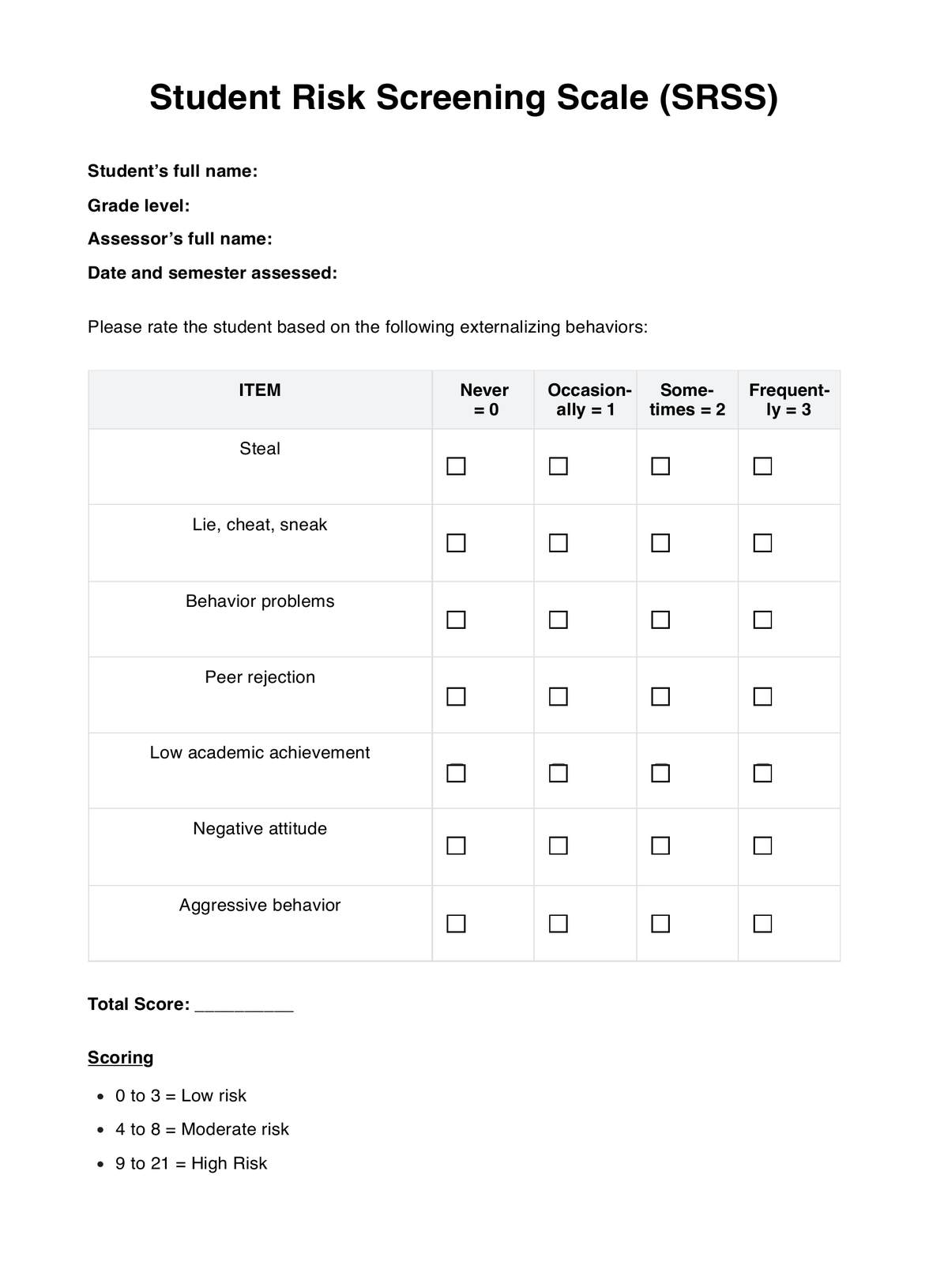Student risk scales are designed as an initial step to highlight potential behavior issues in the classroom, allowing educators and counselors to identify students who may require further evaluation or support. By assessing various behavior patterns and assigning total scores, these scales help detect externalizing behaviors that could hinder a student's academic and social success.

Student Risk Screening Scale (SRSS)
Use the Student Risk Screening Scale (SRSS) to gauge students who may be at risk and plan interventions accordingly.
Student Risk Screening Scale (SRSS) Template
Commonly asked questions
After calculating the total scores from a behavior scale, it is critical to integrate these findings with other data points such as academic performance, attendance, and disciplinary records. This holistic approach ensures that interventions are tailored to the specific needs of each student rather than just the number indicated by the scale.
While total scores from the Student Risk Screening Scale serve as valuable indicators, they should not be used in isolation to determine interventions. It is essential to use a combination of assessments and school-related data to fully understand the student's behavior and create an effective support plan.
EHR and practice management software
Get started for free
*No credit card required
Free
$0/usd
Unlimited clients
Telehealth
1GB of storage
Client portal text
Automated billing and online payments











